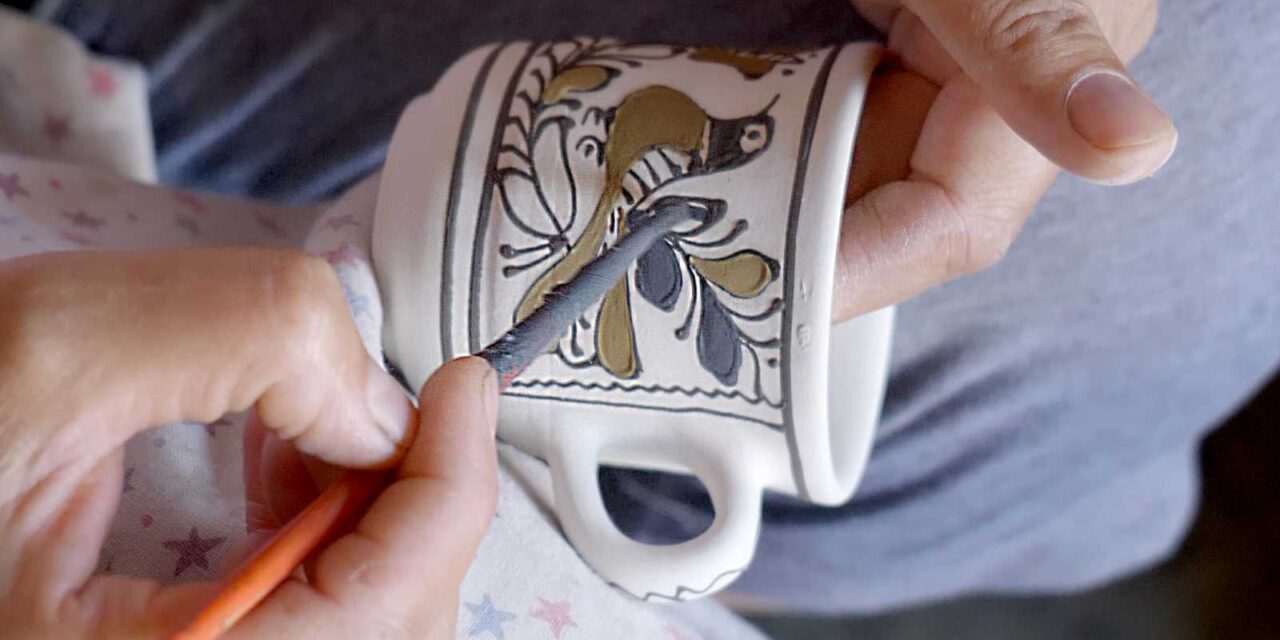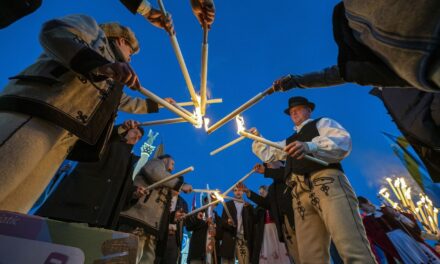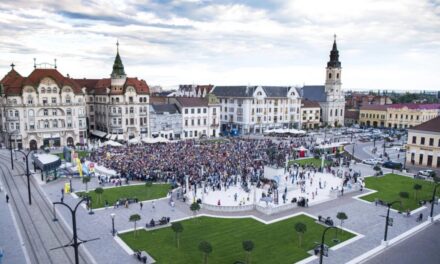Legs of Transylvania: traditional crafts that are now on the verge of extinction.
There are traditional crafts that can be called art. It's as if their practitioners knew a secret - the secret to the perfection of the given port. Many of these activities are now dying out, as fewer and fewer people understand them or pursue them professionally, but fortunately there are always one or two enthusiastic creators who, carrying on the tradition of their ancestors, sew, paint or clay with passion and dedication.
Hide making in Kalotaszeg
"It's colorful, but not colorful, bright, but not gaudy. Like a flowery mountainside hayloft" - this is how Károly Kós described the Kalotaszeg folk costume. The perfect harmony of green and red, the traditional patterns and the unique shape make the hide immediately recognizable to everyone, which is a piece of clothing most comparable to a jacket.
In the 1800s, the first hide sewing workshops were established in Bánffyhunyad, and at that time many girls and boys from Kalotaszeg went there to learn this art, so that they could use their skills at home when they returned to their families. It was then that the pattern used today was also developed, which each master completed according to his own ideas. In every village, the hide is a little different, in some places it is more ornate, in other places it is simpler. The hide in Bogártelk is the most decorated, with many white and yellow ciphers, it is also decorative in the villages along the reeds, it is more restrained in Felszeg, where the blue posto is only sewn with black. Alszegen is again a bit simpler, not as fancy as along the Nádas.
The Kalotaszeg hide is definitely made of wool, traditional dark blue sewn with red and green, or black and green. The main decorative motif is the tulip, which dominates the most, but as a decorative element they use polished glass pearls (bujka pearls or pytyké), and in some villages they are all coded with white or yellow. In the past, it wasn't even an everyday wear, it was worn for festive events and church, where young men went to dance or sing. The more fashionable people even had several hides, although this was rare, it was more typical that the young man received his very first hide at confirmation - this is still the case today - and he had another one made for himself at the age of 40-50, which it was certainly darker in color, with fewer decorations.
Coal burning in Wolfsburg
The Kalonda roof is located in the border of Farkaslaka in Hargita county, where almost the entire population of the settlement once burned coal. The craft has been passed down from generation to generation, and although it is serious physical work, it was not only the work of men. At the farm, the whole family took part in the work, everyone had a task, since the coal burning process consists of several steps and requires almost constant attention. That's why every coal burner lives on the farm. From February to November, they hardly ever enter the settlement, and even if someone does, there must always be at least one person who stays there, because "the baksa cannot catch fire".
The craft of charcoal burning is dying out. Once upon a time, Farkaslaká was known for its coal, but today there are hardly two or three families that still deal with it. Nowadays, it is more of a tradition, but there are those who once learned it from their ancestors, and today they still practice coal burning as a profession. There are several steps between the arrival of the wood at the site and the packing of the coal in bags. The fire burns all day, the smoke flies all day, but the coal people are still happy. According to their own account, they rise when dawn begins. They work until noon, and then, because of the heat, they don't venture near the baks until almost evening. They start again in the evening, and as they said: they are never in a hurry.
The Korund pottery
At one time, six hundred families were engaged in pottery in Koron, one could say that almost everyone made a living from it, today there are barely a hundred who carry on the tradition even further. Although there are fewer and fewer people who vote for this craft every year, the village is still famous for its beautiful ceramics, and there is hardly a tourist who passes through Koron without stopping to buy some of the most beautiful items.
Pottery-making begins with digging, cleaning, and grinding the clay - most often this is no longer done by the potters, rather they buy the ready-made clay - and then may follow the discing, which requires "a lot of patience". After the disking comes the kaolinization, the ceramic is primed with this base material, which gives it a white color, and when it is completely dry, "the women come" to paint it. After it is completely painted, comes the firing.
The bird - a symbol of peace -, the tulip, and the family tree are the most common and oldest motifs that are used, one of these is usually on every ceramic, but if the customer requests a different pattern, the masters are happy to paint it as well. The most common color is black, which is decorated with blue or red, but there are also colorful - red, yellow, green - dishes, and of course they are also plain, most often red or blue.
The straw art of Kõrispatak
Some prepared the raw material, some plaited the straw, and some made the hat. Not much has changed today either. Kőrispatak is a small community of only 600 enthusiasts, whose past and present are closely connected with straw art.
In the past, almost everyone in Kőrispatak was involved in straw weaving: the 40-meter braids were sold to the hat-making families of the village or other settlements, who then made the hats and sold them at the fairs. It was a special situation, no one had a job, it was a small isolated village, but everyone could earn their daily bread in their own house. They mostly worked with wheat, which other Székely farmers gave up because it did not produce a crop. However, the people of Kärispatak have realized that this is an excellent raw material for them, as it has a tall stem, so more raw materials can be made from it without splicing.
The straw hat traditionally also carries a message: originally, it was not only used to protect the wearer from rain or sunstroke, it was not only used to pick fruit and say hello with it, but also revealed the owner's nationality and even where he came from.
The egg hoofing
Egg-shoeing is a special art, there are hardly any craftsmen who understand it. It is rare to meet a scholar of this throughout Transylvania and in the corners of the Carpathian Basin. It's no wonder, because the horseshoe egg is both Hungarian and curio, originating from the 1800s: a Hungarian invention developed by farriers out of "virtuosity". Once they graduated from school, to prove that they really knew their craft, they first had to shoe an egg, which required attention, fine movements, metal bending, hammering, anvil snapping, precision, discipline, concentration and ingenuity, just like shoeing a horse. The difference is that processing an egg can take up to 8-10 hours.
Metal beaters, tires and horseshoes were nailed to the blown eggs. In the old days, a highly prized holiday gift was a horseshoe egg, which was not associated with Easter, but today the decorated egg is closely intertwined with this occasion. Here, too, you need an anvil, a hammer, an anvil, nails and horseshoes, since it is just like horseshoeing, but most of the tools are miniature, adapted to the delicacy of the egg.
When this egg-shoeing appeared, initially the ornaments were made of lead, but this is a toxic material, and today craftsmen know that working with lead can be harmful to their health, so they often replace it with copper.













